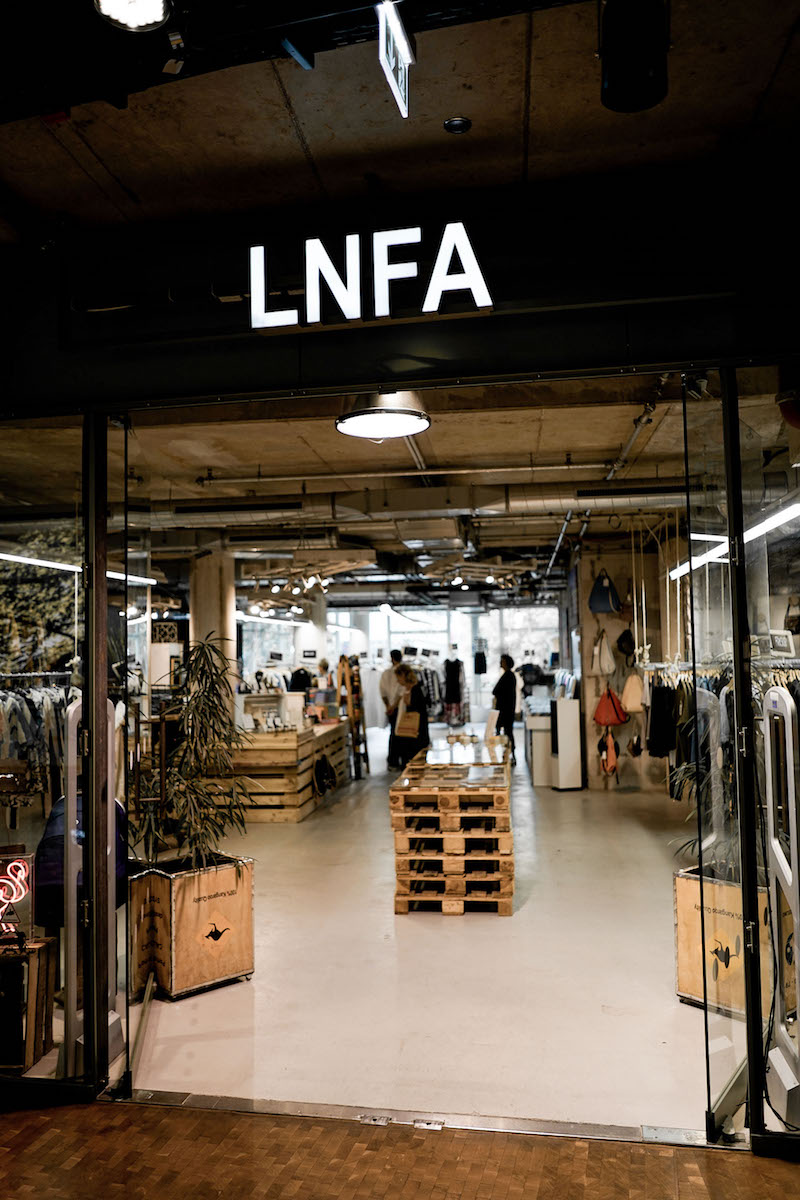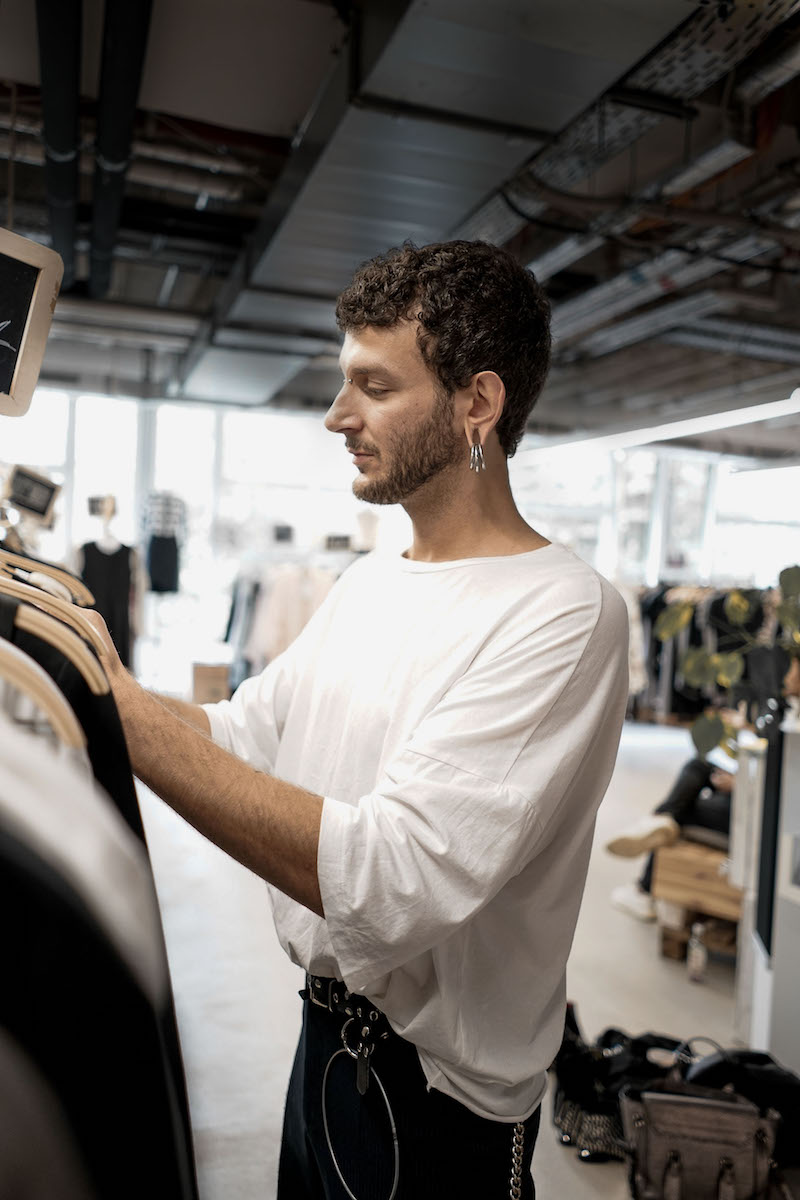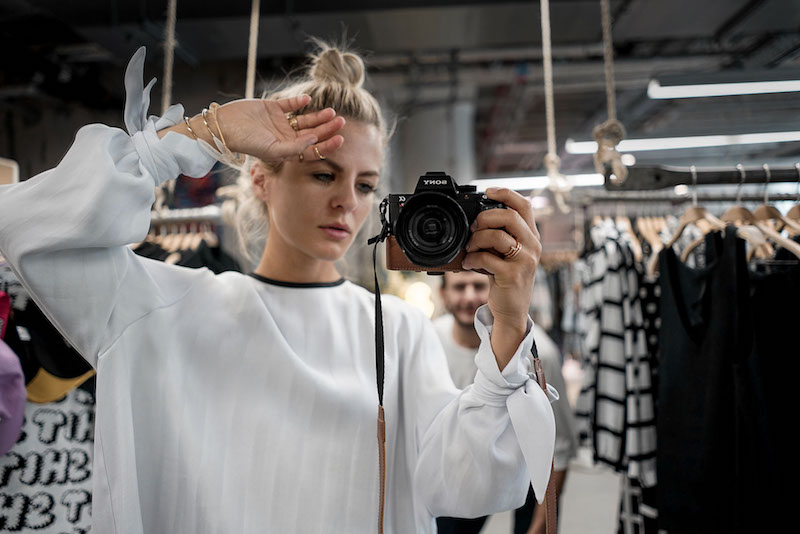
JOURNAL
Class over mass – More ethical shopping or unethical consumption?
My first article for Bikini Berlin. How exciting! So, who am I, you’re probably wondering? My Instagram and blog name is “Marina the Moss” and I’m a Berlin fashion and lifestyle blogger, or influencer as we’re known these days. Which brings us to the subject I want to focus on today.

My job largely consists of presenting fashion. On more or less a daily basis, I showcase the latest trends and pieces by the most varied brands on my different social media channels. So, of course this means I have a constant stream of various clothing from the most diverse labels, styles, price categories and qualities, which I either buy myself, am lent, given as a gift as part of a cooperation or just get sent without even being asked. And when I’m unpacking all these parcels, sorting them or combining outfits, I do often contemplate my own consumer behaviour and society’s consumer behaviour in general.
In many cases, fashion has become a consumer good with a short half-life. The term “fast fashion” springs to mind here. Production costs that have been optimised down to the very last factor, knowledge about changing perceptions, fast-moving goods and exchangeable, easily replaceable clothing have all opened the door to unbridled consumerism for the mass market.
Which is actually a real shame. We’re not thinking enough about our purchases or making deliberated choices. Wouldn’t it make more sense to cherish and appreciate each individual piece of clothing, to pay more attention to the quality and ask ourselves whether we’ll still like and wear it in the long term? Of course that doesn’t by any means exclude cheaper pieces by the well-known big brands. Probably half of my favourite pieces fall into this category and are treasured and well looked after. However, you do often notie a difference in the durability and haptic if you’re looking at higher price categories or smaller labels.

But if you’re not in a position to produce such an immense volume and are making it easy for customers to consume quickly and without much thought thanks to your exchange guarantees, you need to ensure there aren’t any faults in the clothes you sell, regardless of whether they are low-margin or high-margin products. The result is longer-lasting fashion, both in terms of quality and style.
A good example of this is LNFA at Bikini Berlin. In her concept store, “Live Network Fashion & Art” Sevil Oguz offers over 60 different designers a platform on which to present and sell their fashion. This is the ideal place to find a long-time favourite, a unique garment that is mostly the result of lots of heart and soul and a well-thought-out concept. And the sales assistants here have time to really embrace their roles: advising me on this particular day was assistant store manager Leonardo. He was able to provide me with details about each and every designer and piece and therefore create an emotional attachment to each one. A real shopping experience as opposed to mass shopping sprees.
And it’s precisely this full package I want to advocate: making fashion an experience and therefore valuing it more. Of course this isn’t feasible for everyone, whether due to a reasons of time or money. Nonetheless, introducing the notion of conscious consumerism wouldn’t just be a huge success for the fashion industry, but also for the environment and our own well-being and conscience.




